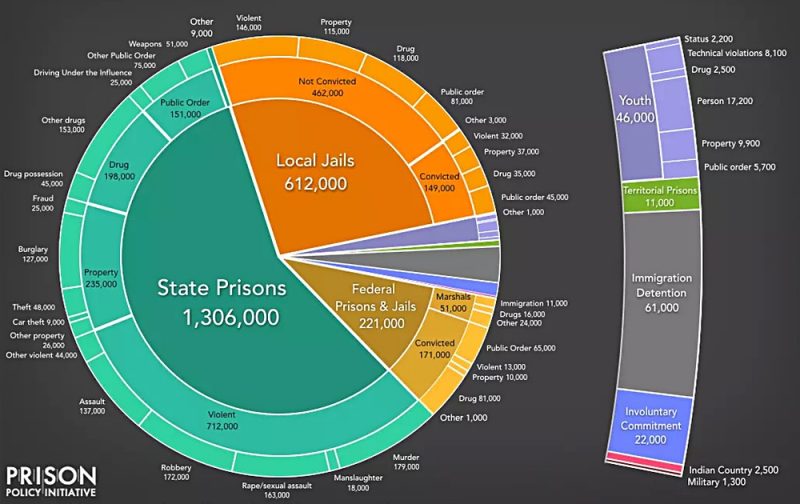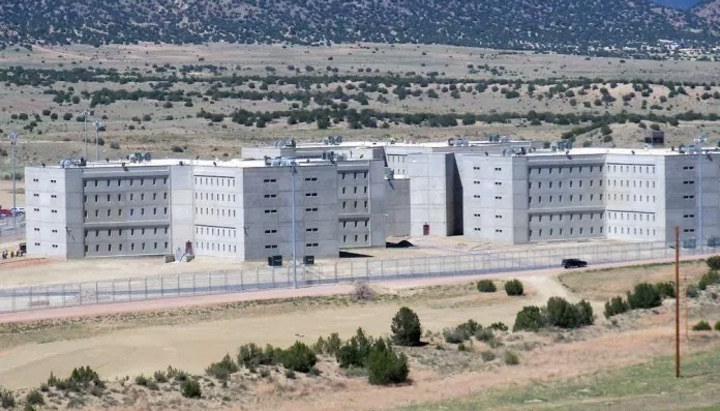A British anthropologist named Colin Turnbull gained some prominence back in 1961 for his book, The Forest People, about the Mbuti Pygmies of Zaire, Africa. He wrote that the Mbuti made their homes by bending saplings into a dome-shaped skeleton, making a latticework that was then covered broad leaves attached as shingles.
Occasionally, when a member of the tribe misbehaved, Turnbull explained, the other members of the tribe would re-orient the doorways to their houses so the entrances faced away from the offender’s dwelling — as a punishment. Once the offending member mended his or her ways, the dwelling entrances would be again re-oriented to their original directions.
The Mbuti apparently found these measures to be effective.

Other cultures have their own various ways of punishing offenders.
Here in the US, we have about 2.3 million citizens locked up in jails — a staggering rate of about 698 per 100,000 population, which is about six times the rate seen in, for example, China. It’s 10 times the rate found in Denmark; it’s 20 times the rate in Iceland. The incarceration rate for Colorado is slightly below the US rate — about 635 per 100,000. Viewed through a global lens, America appears to be fanatic about locking people up.
The largest percentage, according to prisonpolicy.org, are locked up in state prisons. Of the 1.3 million offenders in state prisons, about half have been convicted of violent crimes. The other half are split fairly evenly between property crimes (burglary, theft, fraud) and drug offenses (possession, dealing) and violation of ‘public order’ (weapons offenses, DUIs, etc.)
Close to one-third of all incarceration takes place in local jails. Here in Colorado, those local jails are operated by the county governments, and supervised by Sheriff’s Offices. On any given day, there are nearly half a million people — about 462,000 — locked up in county jails who’ve not yet been convicted of any offense.
Due to the plea bargaining system here in Colorado, a district attorney must legally offer an accused person the opportunity to plead ‘guilty’ to a lesser offense. The general idea is to keep as many cases as possible from dragging out, in lengthy and expensive court proceedings. But what sometimes happens is a DA will charge the accused with a crime more serious than what could easily be proved in court, and then offer a ‘plea bargain’ that more closely matches the alleged crime. The accused is likely to choose the plea bargain, because the offered punishment deal appears less onerous.
Because of this process, a sizable portion of people locked up in US jails and prisons never had a court trial, and were never ‘convicted’ of any crime by a jury of their peers. They simply plead guilty, as part of a ‘bargain.’

Not a bargain for the taxpayers, however.
From an article by reporter John Frank in the Colorado Sun, from last February:
The number of inmates in Colorado is growing, and the total spent annually on corrections is approaching $1 billion for the first time.
The latest data suggest the trendlines are projected to only continue despite bipartisan efforts at the Capitol a year ago to cut costs and reduce the prison population to boost parole and increase community release and supervision programs.
To say state lawmakers are frustrated is an understatement. Led by Democrats, House lawmakers blasted the Colorado Department of Corrections on Thursday, accusing officials of ignoring the law. To emphasize the point, the chamber voted unanimously to cut $1.1 million from a corrections budget bill.
“They cannot thumb their nose at us and say our decisions don’t matter,” said Rep. Adrienne Benavidez, a top Democrat from Adams County.
One of the more controversial issues during the recent legislative session involved a proposal to re-open a former solitary confinement prison — Centennial Correctional Facility-South in Cañon City — that was shut down in 2012.
Centennial South opened in 2010 amid a boom in the state prison population. It cost $208 million to open, and it has capacity for 948 prisoners. The prison was built for solitary confinement, and it closed just two years after opening, as the state Department of Corrections (DOC) phased out prolonged ‘solitary’. In 2017, Colorado’s then-Department of Corrections chief described solitary confinement for more than 15 consecutive days as “torture.” That Colorado would have spent $208 million to construct an entire new prison dedicated to solitary confinement in 2010… I find slightly mind-boggling. But the investors who loaned the money to the state were presumably very pleased with the arrangement.

Earlier this year, state lawmakers passed a bill that was signed into law by Governor Jared Polis, to reopen Centennial South, but only if Colorado prisons holding male inmates reach 99% capacity for two consecutive months. The bill allowed for 126 of the prison’s beds to be used, in the event of reopening. Apparently, it’s just fine to allow 126 men to suffer torture, if our other prisons are filled to capacity. I mean, we did, after all, spend $208 million building this concrete torture chamber.
“Our goal is reducing recidivism, which leads to reductions in the incarceration rate, (and) phasing out private prisons,” Polis said in an interview quoted in the Colorado Independent.
Back home in Archuleta County, the Board of County Commissioners are no doubt pleased to view the continuing construction of a new 56-bed jail in the middle of the Harman Park subdivision, to be named after one of our more prominent local leaders, Fred Harman III, who passed away in 2016.
The new $15 million detention center will accommodate twice the number of inmates typically held by the Archuleta County Sheriff. I estimated the operational cost of the jail — over the next 15 years, while the ‘Certificates of Participation’ debt is being paid off with taxpayer revenues — at about $2.8 million a year.
The cost in unnecessary human suffering, we cannot measure.
